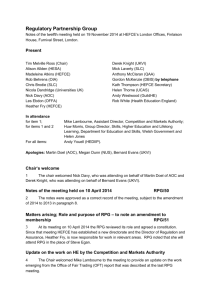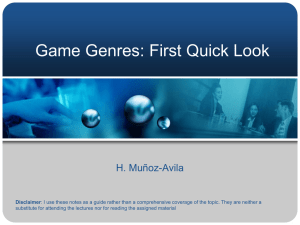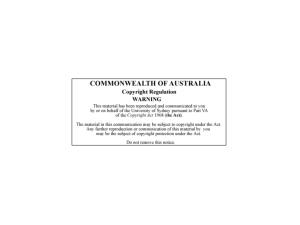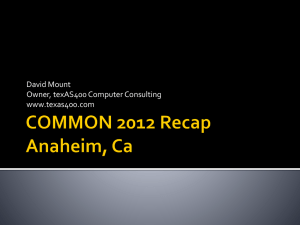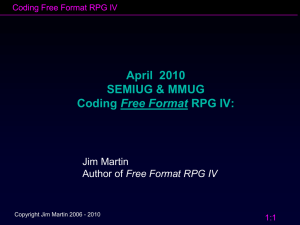Spin-polarization coupling in multiferroic transition
advertisement
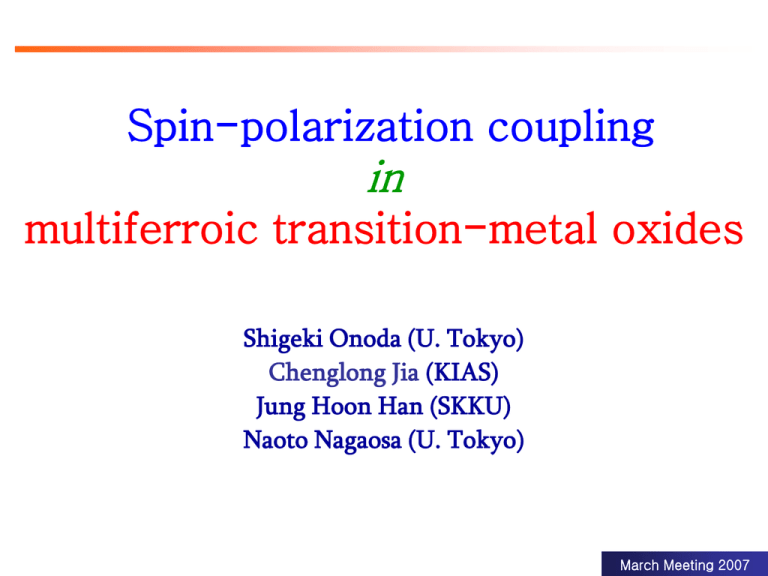
Spin-polarization coupling in multiferroic transition-metal oxides Shigeki Onoda (U. Tokyo) Chenglong Jia (KIAS) Jung Hoon Han (SKKU) Naoto Nagaosa (U. Tokyo) March Meeting 2007 Multiferroics with noncollinear magnetic and ferroelectric phase Material TbMnO3 (Kimura et al Nature 2003; Kenzelman et al PRL 2005) Ni3V2O8 (Lawes et al PRL 2005) Ba0.5Sr1.5Zn2Fe12O22 (Kimura et al PRL 2005) CoCr2O4 (Yamasaki et al. PRL 2006) MnWO4 (Taniguchi et al. PRL 2006) CuFeO2 (Kimura et al PRB 2006) LiCuVO4 (Naito et al cond-mat/0611659) LiCu2O2 (Park et al PRL 2007) d-electron Polarization (C/m2); Q Specifics d4 (t2g)3 (eg)1 800; q~0.27 Orbital order d8 (t2g)6 (eg)2 100; q~0.27 Kagome d5 [(t2g)3 (eg)2]? 150 (B=1T); N/A N/A Co2+ : d7 (e)4 (t2)3 Cr3+ : d3 (t2g)3 2; [qq0] q~0.63 ferrimagnetic d5 (t2g)3 (eg)2 50; q=(-.214, .5, .457) N/A d5 (t2g)3 (eg)2 400 (B>10T); 1/5<q<1/4 2D triangular; Field-driven d9 (t2g)6 (eg)3 N/A; q~0.532 1D chain d9 (t2g)6 (eg)3 <10; q~0.174 1D chain RED = magnetic ions March Meeting 2007 Common & uncommon features Common Involves 3d transition metal magnetic ions (Fe, Mn, Ni, Co, Cr, Cu) Onset of ferroelectricity concomitant with that of noncollinear magnetic order Not Common Different d-electron configurations (d1-d9, t2g, eg, mixed t2g-eg) Spin-polarization coupling seems universal, irrespective of d-electron number March Meeting 2007 In this talk A microscopic theory of spin-polarization coupling for arbitrary d-electron configuration is presented March Meeting 2007 Existing theories Phenomenological theories of Mostovoy & Harris provide general ground for writing down the spin-polarization coupling Microscopic derivation first given by Katsura, Nagaosa, Balatsky (2005) Physical origin: spin-orbit interaction March Meeting 2007 Developing a Microscopic Theory A linear chain consisting of alternating M(agnetic) and O(xygen) atoms is a reasonable model for magneto-electric insulators M O M O M O M O M O M O M O M The building block is a single M-O-M cluster. We solve this model as exactly as possible for realistic d-electron configurations: t2g, eg, mixed t2g-eg Previous theory of KNB based on t2g orbitals March Meeting 2007 Our Result Jia, Onoda, Nagaosa, Han, cond-mat/0701614 March Meeting 2007 Classification of spin-orbit interactions d-electron Mechanism t2g Spin-orbit within 3-fold degenerate t2g subspace (SOM) eg No SO allowed within eg subspace, invoke SO at ligand ion (SOL) Partially filled t2g & eg; SOM can mix t2g and eg levels and the new eg levels become “active” t2g-eg In all instances we find non-zero Psp associated with noncollinear magnetic order Psp is reallly UNIVERSAL March Meeting 2007 t2g t2g t2g p Both Porb and Psp are found March Meeting 2007 eg eg eg p Only Psp exists due to oxygen p-orbital spin-orbit interaction Relevant to d8 NVO; d9 LiCu2O2 ,LiCuVO4 March Meeting 2007 Mixed t2g-eg: Model for TbMnO3 Ingredients: (1) Orbital ordering takes place at high temperature -> Inversion symmetry is broken; two-sublattice structure to begin with -> Need to generalize theory for two-sublattice orbitals (2) d4 (t2g)3 (eg)1 configuration gives rise to (t2g)-(eg) mixing and polarization (3) Spin-orbit coupling at oxygen gives rise to polarization March Meeting 2007 Loss of Inversion Symmetry A new term along the cluster axis due to lack of inversion symmetry; No spin-orbit interaction is required March Meeting 2007 t2g-eg mixing (C.D.Hu, cond-mat/060470; Our work) Mixing of occupied spin-up eg state and unoccupied spin-down t2g state Gives rise to Psp Numerical estimate using realistic parameters of TbMnO3 consistent with experimentally measured polarization Same mechanism may be relevant for CuFeO2 (t2g)3 (eg)2 MnWO4 (t2g)3 (eg)2 March Meeting 2007 Relevance for X-ray scattering For a helical spin pattern at wavevector Q, there arises lattice modulations due to induced polarization at various wavevectors; Fourier harmonics Polarization Two-sublattice structure gives further peaks at Spin-current type of polarization is the only UNIFORM POLARIZATION March Meeting 2007 Summary A general theory of magnetism-induced dipole moment is presented The mechanisms can be classified according to t2g, e g, and mixed t2g-e g configurations One can identify the origin of improper ferroelectricity in diverse d-electron configurations as follows: d-electron configuration Mechanism (t2g)3 (eg)n (n=1,2,3) t2g-eg mixing; Ligand SO (t2g)6 (eg)n (n=1,2,3) Ligand SO (t2g)n (n=1,2,4,5) Magnetic SO March Meeting 2007



